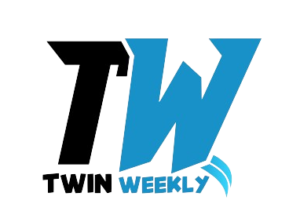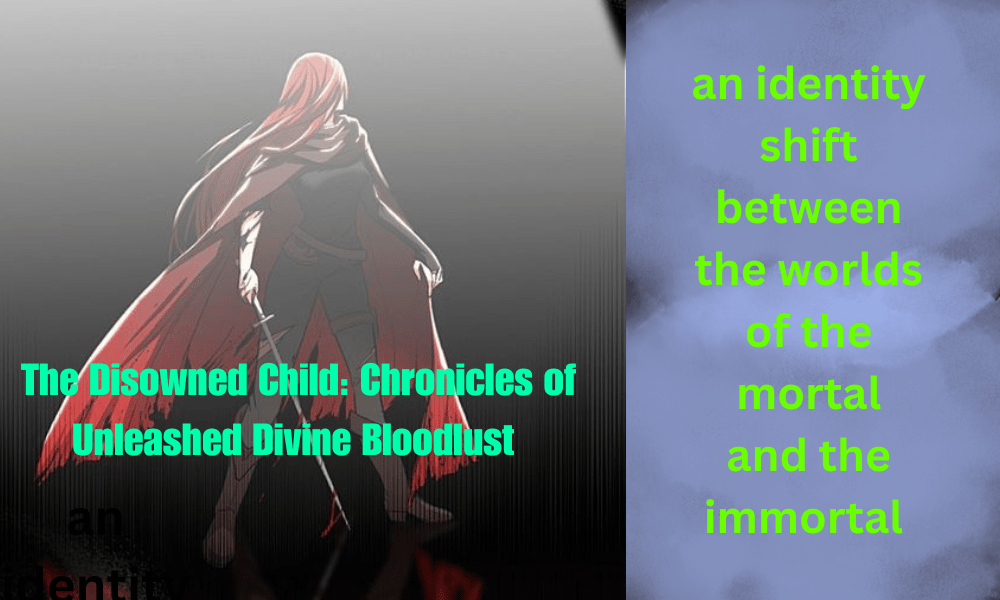- 1
- 2 Introduction: The Phenomenon of the Disowned Child
- 3 Ancient Mythology: Wrath of the Gods
- 3.1 Literary Legacy: From Milton’s Paradise Lost to Modern Interpretations
- 3.2 The Rejection of Kin: Fractured Family Bonds
- 3.3 The Burden of Divine Heritage: Between Mortal and Immortal Realms
- 3.4 The Quest for Redemption: From Outcast to Hero
- 3.5 Impact on Mortal Realms: Catalysts of Change and Harbingers of Destiny
- 3.6 Navigating the Moral Landscape: Catalysts for Reflection and Growth
- 3.7 Inspiring Hope and Resilience: Triumph Amidst Adversity
- 3.8 Conclusion: The Disowned Child: Chronicles of Unleashed Divine Bloodlust
Introduction: The Phenomenon of the Disowned Child
The narrative of the disowned child resonates through time, depicting tales of divine wrath and profound rejection. From ancient mythologies to modern literature, these stories captivate with their intense emotional and moral dilemmas. The Disowned Child: Chronicles of Unleashed Divine Bloodlust, often burdened with a divine heritage, stands at the crossroads of mortal and immortal realms, grappling with their fractured identity. As they navigate their quest for redemption, they become catalysts for profound change and moral reflection. This article delves into the enduring legacy of the disowned child, exploring their impact and significance across cultures and eras. Join us as we uncover the chronicles of unleashed divine bloodlust.
Ancient Mythology: Wrath of the Gods
Ancient mythology is rich with tales of divine beings casting out their own offspring, showcasing a blend of divine wrath and familial betrayal. These stories, steeped in symbolism and moral lessons, reflect the complex relationship between gods and mortals.
One of the most famous examples is the Greek myth of Cronus and his children. Cronus, fearing a prophecy that one of his offspring would overthrow him, devoured each child at birth. However, his wife Rhea saved the youngest, Zeus, who eventually fulfilled the prophecy, dethroning Cronus and becoming the king of the gods. This tale highlights the themes of fear, power, and inevitable destiny, illustrating the dire consequences of divine paranoia and rejection.
Another poignant example is the story of Heracles, born to Zeus and the mortal woman Alcmene. Hera, Zeus’s wife, tormented Heracles out of jealousy and spite, leading to a life of immense suffering for the demigod. Heracles’ trials, including the famous Twelve Labors, symbolize the struggle for redemption and the quest to prove one’s worth despite divine disdain. His ultimate ascension to Olympus underscores the theme of triumph over adversity.
In Norse mythology, the god Loki’s children are subjected to harsh fates due to prophecies foretelling their roles in Ragnarok, the end of the world. Loki’s offspring, including the monstrous wolf Fenrir and the serpent Jörmungandr, are imprisoned or banished by the gods. These tales explore the inevitability of destiny and the harsh measures taken to prevent prophesied doom, revealing the complex interplay between fate and divine intervention.
These myths serve as more than just stories; they offer insights into ancient cultures’ understanding of divine justice, the complexities of parent-child relationships, and the often harsh consequences of divine disfavor. Through these narratives, the disowned child becomes a powerful symbol of resilience, destiny, and the relentless pursuit of redemption, setting the stage for their continued presence in literature and media throughout the ages.
Literary Legacy: From Milton’s Paradise Lost to Modern Interpretations
The theme of the disowned child has a rich literary legacy, starting with classic works like John Milton’s Paradise Lost. In this epic poem, Satan, cast out from Heaven, embodies the ultimate disowned figure, rebelling against divine authority and facing eternal damnation. His complex character evokes both sympathy and condemnation, highlighting themes of rebellion, pride, and the consequences of divine rejection.
In Mary Shelley’s Frankenstein, the Creature, abandoned by his creator Victor Frankenstein, exemplifies the anguish of being disowned. The Creature’s quest for acceptance and subsequent descent into vengeance and violence underscore the profound impact of rejection and the desperate need for belonging and recognition.
Modern interpretations continue to explore this theme. In popular culture, characters like Harry Potter in J.K. Rowling’s series, who is rejected by his family and thrust into a world of magic and destiny, and Luke Skywalker from Star Wars, who struggles with his paternal heritage and the burdens it brings, reflect the enduring appeal of the disowned child narrative. These stories emphasize themes of identity, resilience, and the search for purpose.
Through these diverse portrayals, the disowned child remains a compelling figure, capturing the complexities of human and divine relationships, and the eternal struggle for redemption and acceptance.
The Rejection of Kin: Fractured Family Bonds
The rejection of kin is a powerful and recurring theme that underscores the emotional and psychological turmoil of being cast out by one’s family. This profound betrayal cuts to the core of human experience, exploring the pain and resilience that arise from such fractures.
In mythology and literature, characters like Oedipus from Sophocles’ Oedipus Rex face devastating familial rejection and the catastrophic consequences of their lineage. Oedipus’s journey, marked by the discovery of his true origins and the subsequent unraveling of his life, highlights the tragic weight of family secrets and the inescapable nature of fate.
In contemporary literature, characters such as Jane Eyre in Charlotte Brontë’s Jane Eyre endure familial rejection, navigating their lives as outcasts. Jane’s resilience and quest for belonging and love illustrate the struggle against societal and familial rejection, emphasizing personal strength and moral integrity.
These narratives not only delve into the immediate emotional impact of being disowned but also explore the long-term effects on identity and self-worth. They reveal how fractured family bonds can shape destinies, inspire quests for redemption, and challenge characters to redefine their place in the world. Through these stories, the theme of rejection by kin continues to resonate, reflecting universal struggles and the enduring hope for acceptance and reconciliation.
The Burden of Divine Heritage: Between Mortal and Immortal Realms
Characters with divine heritage often find themselves torn between the mortal and immortal realms, struggling to reconcile their dual identities and the expectations that come with them. This conflict is a central theme in many mythological and literary narratives, highlighting the unique burdens faced by those who straddle these two worlds.
In Greek mythology, Hercules (Heracles) is a prime example. Born of Zeus and a mortal woman, he endures immense trials due to Hera’s wrath, grappling with his extraordinary strength and divine lineage while seeking a place among mortals. His labors and ultimate apotheosis reflect the constant tension and eventual reconciliation between his dual natures.
Percy Jackson, the modern demigod from Rick Riordan’s Percy Jackson & the Olympians series, similarly struggles with his identity. As the son of Poseidon, Percy navigates a world of gods and monsters while trying to maintain a semblance of a normal life. His adventures illustrate the challenges and responsibilities that come with his divine heritage, as well as the journey to accept his true self.
These stories explore the complex dynamics of identity, duty, and belonging. Characters with divine heritage often face heightened expectations and pressures, driving them to extraordinary feats or tragic downfalls. Their journeys emphasize the struggle to find balance and acceptance, both within themselves and in the world around them. Through their trials and triumphs, these narratives delve into the profound impact of carrying a divine legacy amidst mortal limitations.
The Quest for Redemption: From Outcast to Hero
The quest for redemption is a central theme in narratives featuring disowned children, depicting their journey from outcasts to heroes. This transformative arc emphasizes resilience, courage, and the pursuit of acceptance and honor.
In Greek mythology, the hero Perseus, born from the union of Zeus and the mortal Danaë, is cast away due to a prophecy. Perseus’s heroic feats, including slaying Medusa and saving Andromeda, redeem his status and secure his place among the celebrated heroes of Greek lore. His story highlights the power of perseverance and the possibility of triumph despite initial rejection.
Similarly, in J.R.R. Tolkien’s The Lord of the Rings, Aragorn, the disinherited heir to the throne of Gondor, embarks on a quest to reclaim his rightful place. His journey, marked by bravery, leadership, and self-discovery, leads to his ultimate redemption as the true king. Aragorn’s transformation from a wandering ranger to a revered monarch underscores the themes of destiny and the reclaiming of honor.
These narratives illustrate that redemption is often achieved through facing and overcoming great challenges. The disowned child’s journey to heroism not only restores their honor but also brings about significant positive change in their world. Through their struggles and successes, these characters demonstrate that even those cast out can rise to greatness, offering a powerful message of hope and resilience.
Impact on Mortal Realms: Catalysts of Change and Harbingers of Destiny
The presence of disowned children often serves as a catalyst for profound change within mortal realms, shaping destinies and altering the course of history. Whether through prophecy, destiny, or sheer force of will, these characters become instrumental in driving transformative events.
In the Harry Potter series by J.K. Rowling, Harry Potter, marked as the “Chosen One” from infancy, plays a pivotal role in the wizarding world’s struggle against darkness. His status as the disowned child of legendary parents propels him into a destiny fraught with danger and sacrifice. Harry’s journey not only affects his own life but also influences the fate of the wizarding community, leading to the downfall of Voldemort and the restoration of peace.
Similarly, in George R.R. Martin’s A Song of Ice and Fire series, Jon Snow, the illegitimate son of Eddard Stark, rises to prominence within the realm of Westeros. Jon’s quest for identity and honor intertwines with the political machinations of the Seven Kingdoms, ultimately positioning him as a key player in the battle against the White Walkers and the struggle for the Iron Throne.
These narratives demonstrate how the disowned child, despite their marginalized status, possesses the potential to shape the world in profound ways. Their actions and decisions ripple through society, challenging established norms and inspiring hope in the face of adversity. As harbingers of destiny, they embody the transformative power of resilience, courage, and the relentless pursuit of justice.
The tales of disowned children serve as potent mirrors for moral reflection and growth, prompting audiences to ponder questions of identity, justice, and redemption.
In Shakespeare’s King Lear, the titular character’s rejection of his daughter Cordelia sets off a chain of events that culminate in tragedy. Lear’s realization of his folly and Cordelia’s unwavering love and forgiveness provoke contemplation on the nature of familial bonds, the consequences of pride, and the power of forgiveness.
Similarly, in the film The Lion King, Simba’s exile and eventual return to Pride Rock prompt viewers to consider themes of responsibility, destiny, and the impact of past actions on future generations. Simba’s journey from guilt-ridden exile to noble king mirrors the human struggle to confront one’s past and accept the responsibilities of adulthood.
These narratives challenge audiences to confront their own moral beliefs and actions, encouraging introspection and empathy. By exploring the complexities of human nature and relationships, stories of disowned children become vehicles for personal growth and understanding, inspiring viewers to strive for greater compassion, integrity, and reconciliation in their own lives.
Inspiring Hope and Resilience: Triumph Amidst Adversity
The stories of disowned children are often tales of triumph amidst adversity, inspiring hope and resilience in audiences facing their own challenges.
In Disney’s The Hunchback of Notre Dame, Quasimodo, rejected by society for his physical appearance, finds strength and courage to defy prejudice and fight for justice. His journey, marked by compassion and self-discovery, resonates with viewers, offering a message of hope and empowerment in the face of discrimination.
Similarly, in Khaled Hosseini’s The Kite Runner, Amir grapples with guilt and redemption after betraying his childhood friend Hassan. Despite his flaws and past mistakes, Amir’s journey towards self-forgiveness and reconciliation inspires readers to confront their own demons and strive for personal growth.
These narratives demonstrate that adversity does not define one’s destiny; rather, it is the response to adversity that shapes character and resilience. Through the struggles and triumphs of disowned children, audiences find solace and motivation to persevere in their own lives, embracing the power of hope and resilience to overcome even the greatest of obstacles.
Conclusion: The Disowned Child: Chronicles of Unleashed Divine Bloodlust
The Disowned Child: Chronicles of Unleashed Divine Bloodlus, archetype has left an indelible mark on literature, mythology, and popular culture, captivating audiences with its timeless themes of rejection, redemption, and resilience. From ancient myths to modern tales, the narrative of the disowned child continues to resonate, offering profound insights into the human experience.
Through the trials and triumphs of characters like Hercules, Harry Potter, and countless others, we are reminded of the universal struggle for acceptance and belonging. These stories serve as mirrors for our own lives, prompting reflection on the complexities of identity, morality, and destiny.
As we navigate the moral landscapes of these narratives, we are challenged to confront our own biases and shortcomings, and to strive for greater compassion and understanding. The disowned child becomes not just a character in a story, but a symbol of hope and resilience, inspiring us to persevere in the face of adversity and to embrace the fullness of our humanity.
In the end, the enduring legacy of the disowned child reminds us that even in our darkest moments, there is always the possibility of redemption, and that our greatest strength lies in our ability to rise above our circumstances and forge our own path.



